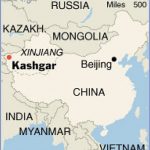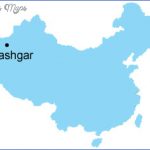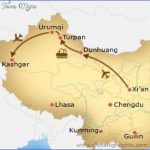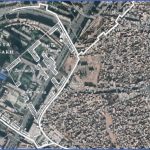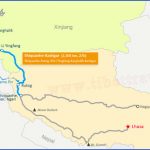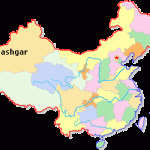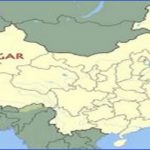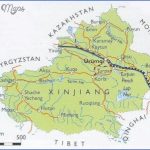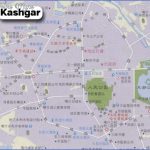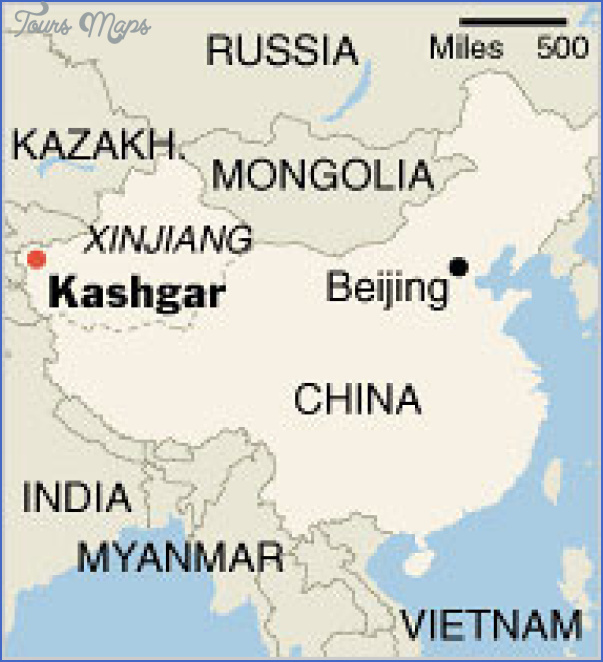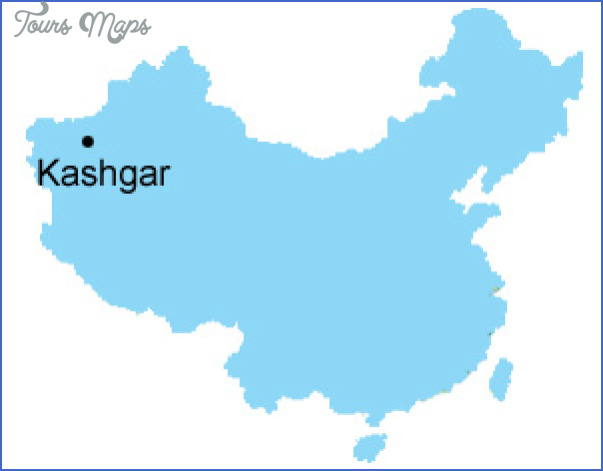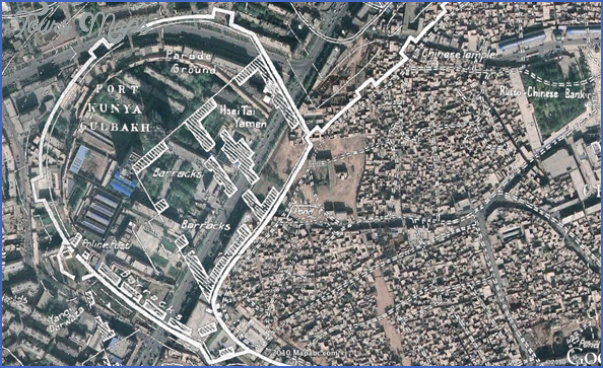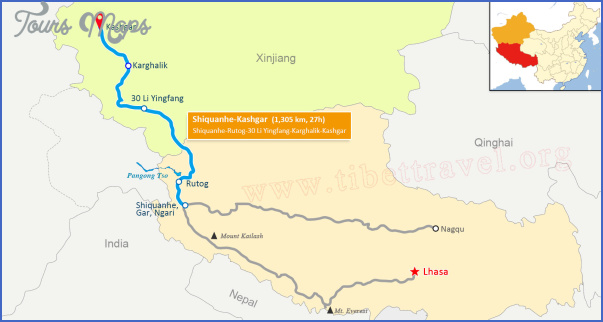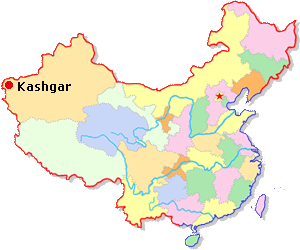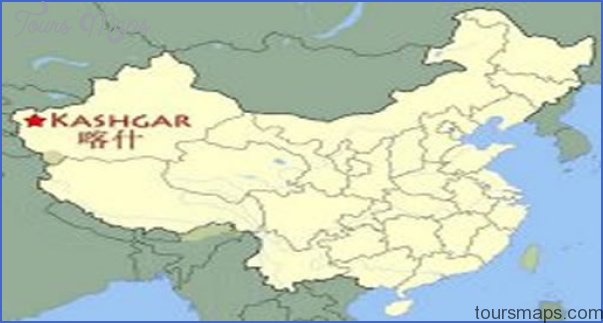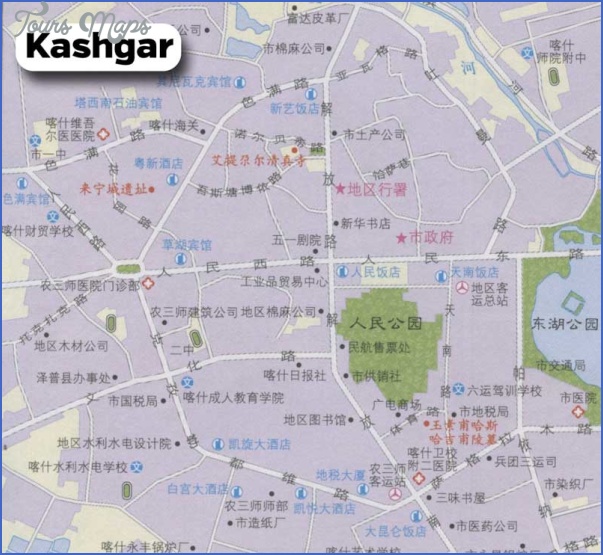Autonomous region of Xinjiang
Altitude: 1289m/4229ft. Population: 100,000 (conurbation 300,000)
The oasis town of Kashgar (also Kaxgar, Chin. Kashi) lies on the old Silk Road in the west of the autonomous region of Xinjiang, at 75°58’E and 39°35’N.
It is about 1000km/620 miles from Uriimqi, the capital ofthe region, and is connected with it by regular flights (about 4hrs) and buses (3-5 days).
Kashgar, the most westerly town in China, is predominantly inhabited by Uigurs and is heavily influenced by Islam. The traditional craftwork includes carpets, embroidery and musical instruments.
Kashgar was founded over 2100 years ago by Huns, Indoscyths, Uigurs and other ethnic groups. With the establishment of the Silk Road and the formation of a municipal administration under the Western Han dynasty (206 b.c.-a.d. 8), the settlement underwent considerable development. At the time of the Tang dynasty (618-907) it was also used as a military base.
The Id Kah Mosque, the largest in Xinjiang, situated on the square of the same name in the centre of the town, can accommodate up to 8000 worshippers and has an area of 1ha/12,000sq.yd. It was built in 1798, since when it has been restored and extended several times. The roof, which is lavishly decorated with floral motifs, is supported by 140 green pillars with sculptured ornamentation. Nearby there is a traditional and very characteristic bazaar (“bazha”).
Every Sunday a market is held on the north-east edge of the town. Local products of every conceivable kind are on sale here: carpets, hats, jewellery, Uigur knives and even donkeys and horses. With an average of
150,000 visitors it is thought to be the largest open-air market in the world.
The tomb of Abakh Hoja, a typical 17th c. Islamic monumental tomb which was completely restored in 1807, lies on the eastern edge of the town. It is almost completely composed of green ceramic tiles. The entrance is decorated with geometric patterns, the walls with stuccoed bas-reliefs. Up to 50 years ago the domed roof was crowned by a massive gold figure weighing 1.5kg/3lb. In the interior 72 members of the Abakh Hoja family are interred, their ancestor being an Islamic saint ofthe 17th c.
The Grottoes of the Three Immortals date from the Eastern Han period (25-220) and lie 10km/6 miles to the north of the town, on the slopes of a steep hill. Each one of the three long interlinking caves is divided into a front and rear section. A badly damaged Buddha statue is kept in the rear section of the middle cave. On the walls of the left-hand cave there are some 70 likenesses of Buddha, dating back 1700 years. One ofthe Buddhas on the rear wall is depicted with a bare back – an unusual phenomenon in the wall paintings of that period.
The sparse remains ofthe town of Hanoi, dating from the Tang era (618 907), are to be found 30km/19 miles north-east of Kashgar.
Kashgar Map Photo Gallery
Maybe You Like Them Too
- The Best Cities To Visit in The World
- World’s 10 Best Places To Visit
- Coolest Countries in the World to Visit
- Travel to Santorini, Greece
- Map of Barbados – Holiday in Barbados

